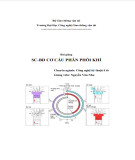Tài liệu Thư viện số
- Tài liệu Nội sinh (134)
- Khoa Kỹ thuật Công nghệ ô tô (1048)
- Khoa Kỹ thuật Công nghệ Cơ khí (1667)
- Khoa Kỹ thuật Công nghệ Điện - Điện tử (1831)
- Khoa Khoa học SHƯD (1823)
- Khoa Công nghệ thông tin (1710)
- Khoa SPKT & XHNV (1827)
- Khoa Lý luận chính trị (435)
- Khoa Kinh tế - Luật (1943)
- Khoa học cơ bản (859)
- Trung tâm Ngoại ngữ (229)
- Trung tâm GDTC-GDQP (133)
- Luận văn - Báo cáo (239)
- Tài liệu đào tạo nghề (104)
- Tài liệu ngoại văn (162)
Danh mục TaiLieu.VN
- Mẫu Slide Powerpoint
- Luận Văn - Báo Cáo (346704)
- Kinh Doanh Marketing (67778)
- Kinh Tế - Quản Lý (50036)
- Tài Chính - Ngân Hàng (57809)
- Công Nghệ Thông Tin (143292)
- Tiếng Anh - Ngoại Ngữ (47261)
- Kỹ Thuật - Công Nghệ (137309)
- Khoa Học Tự Nhiên (110530)
- Khoa Học Xã Hội (85272)
- Văn Hoá - Nghệ Thuật (54491)
- Y Tế - Sức Khoẻ (177214)
- Nông - Lâm - Ngư (63475)
- Kỹ Năng Mềm (29084)
- Biểu Mẫu - Văn Bản (27862)
- Giải Trí - Thư Giãn (52535)
- Văn Bản Luật (199483)
- Tài Liệu Phổ Thông (409665)
- Trắc Nghiệm Online (213578)
- Trắc Nghiệm MBTI
- Trắc Nghiệm Holland
Tài liệu nổi bật
Đăng nhập
Bộ sưu tập số






